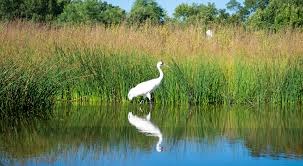Harare’s critical headwater wetlands essential for the city’s water supply, are under increasing threat from unplanned settlements, pollution, sand mining and corrupt land allocations, sparking calls for urgent action. With 82% of Zimbabwe’s wetlands now moderately to severely degraded only 18% remain intact, according to the Environmental Management Agency (EMA).
Speaking at a workshop hosted by Birdlife Zimbabwe and the Harare Wetlands Trust on Tuesday, experts highlighted the importance of community-led initiatives to protect these vital ecosystems.
Stakeholders emphasised the need for greater civic education and community engagement to drive transparency and accountability in wetlands management.
A representative from EMA, Leon Mutungamiri highlighted the agency’s commitment to supporting grassroots efforts.
“It is important to come up with awareness meetings which are community based, and as EMA, we are prepared to be part of these meetings. That is one sure way of ensuring community involvement in the protection of our wetlands,” Mutungamiri said.
Harare’s wetlands, which include three internationally recognized sites under the Ramsar Convention Monavale Vlei, Cleveland Dam, and Lake Chivero are vital for water purification, flood control, and biodiversity.
Despite their importance, half of Harare’s wetlands have been lost in the past two decades, warned Selestino Chari, Programmes Manager for the Harare Wetlands Trust.
“Without urgent action, the city risks losing its remaining wetlands in the coming years. This loss will exacerbate water shortages, as wetlands play a critical role in sustaining water resources.” Chari said
He also noted that the upcoming Ramsar Convention’s 15th Conference of Parties in Victoria Falls presents a key opportunity to advance national and regional commitments to wetlands conservation.
Protecting wetlands, he added, aligns with Zimbabwe’s National Development Strategy 1 and global biodiversity and climate goals.



